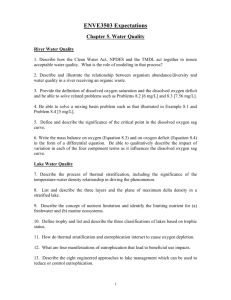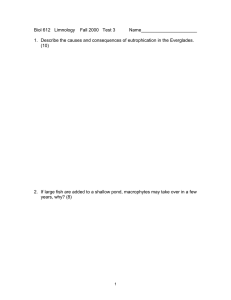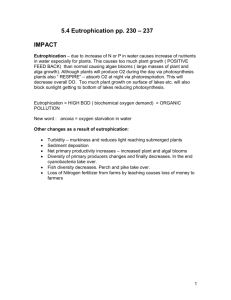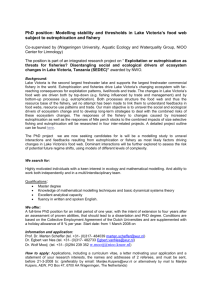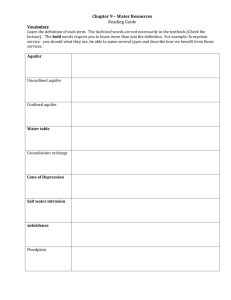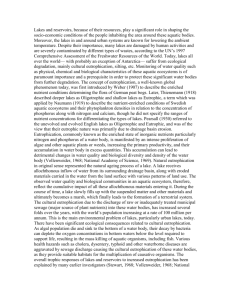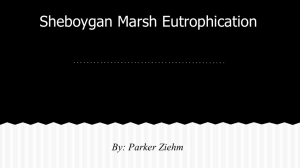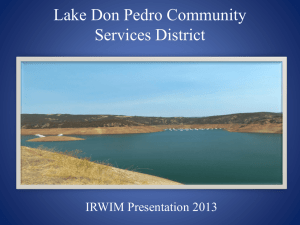To access Lake Succession Notes Click Here
advertisement
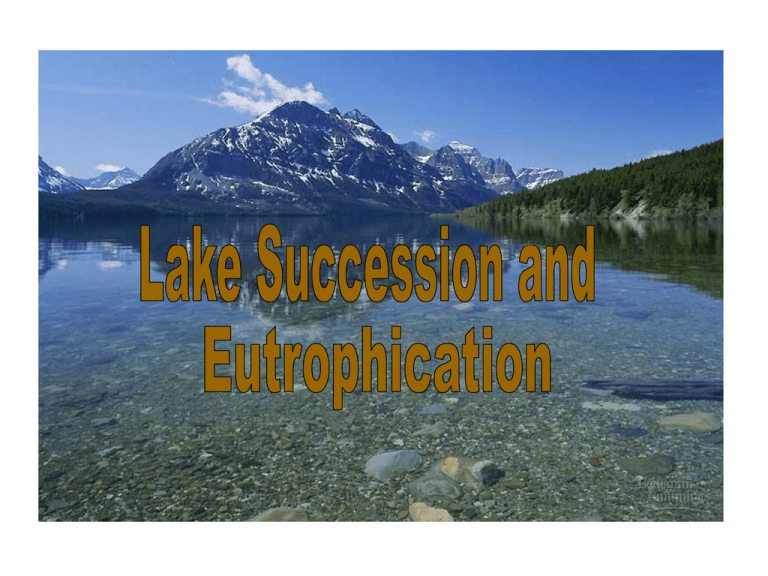
Lake Succession - Trophic States Oligotrophic Mesotrophic Eutrophic Extinction General Characteristics of Lakes Oligotrophic Eutrophic 1. Deep, steep-sided basin 2. Very low nutrients and org. matter 3. High hypolimnetic DO 4. High light penetration 5. Little or no rooted veg., periphyton in littoral 6. Low phytoplankton density 7. Low fertility 1. Shallow, sloping basin 2. Relatively high nutrients and org. matter 3. Low hypolimnetic DO 4. Low light penetration 5. Rooted and emergent veg. 6. High phytoplankton density 7. High fertility The Eutrophication Process: Succession 1. Nutrient enrichment 2. Increased organic matter production • Increased growth transfers up the food chain 3. Gradual filling of basin • • Sedimentation Accumulation of slowly decomposing plants (peat) 4. Terrestrial plant invasion Lake Succession Natural succession depends on: 1. Original basin shape • Mean depth 2. Nature of drainage basin • • • Erosion rates Soil composition nutrient inputs Hydrologic residence time 3. Climate • • Rain and snowfall Mean temperature 4. Geologic age Succession and Stratification Cultural (Human Induced) Eutrophication 1. Sources of nutrient enrichment a. b. c. d. e. Municipal sewage Industrial wastes Agricultural fertilizers Detergents (phosphorous) Sediment from land clearing, road building, land development f. Poor forest practices Cultural Eutrophication Examples of Cultural Eutrophication 1. The Great Lakes • Large population increases and forest clearing • Point and non-point nutrient sources • Volumes and retention times influence response - Lake Erie (shallow) – most rapid eutrophication and recovery - Lake Ontario (deep) – slow recovery due to internal loading - Lake Michigan (large and deep) – extreme local eutrophication - Lake Superior (larger volume) – slow response to nutrient loading Eutrophication in the Great Lakes as Reflected in Total Dissolved Solids Lake Erie 2. Lake Washington • Progressive eutrophication – highly populated watershed • Then recovery ( Transparency, Coliform) following sewage diversion - Relatively rapid response – short hydraulic residence time (little internal loading) - Mostly a P issue, N levels remained high Lake Washington Recovery Lake Washington 25% of the lakes in the US have become Eutrophic within the last 100 years
